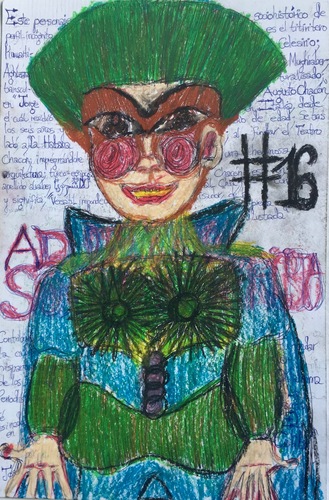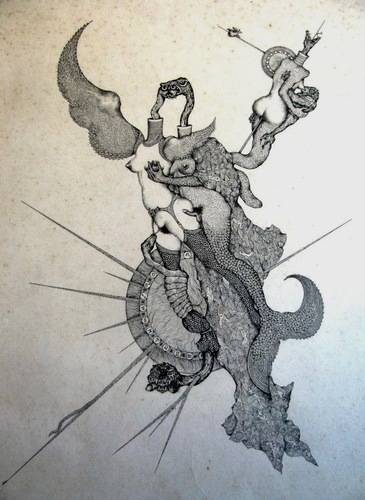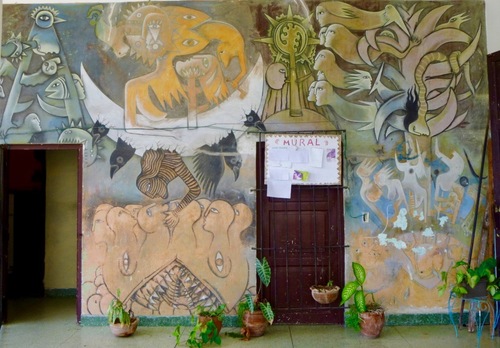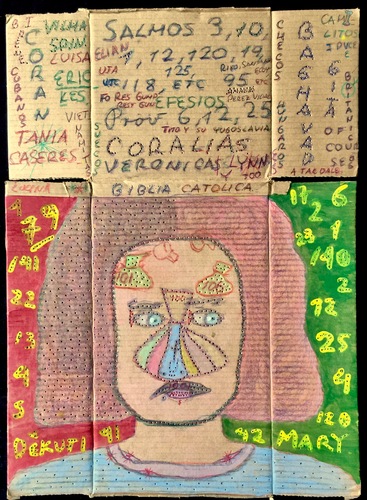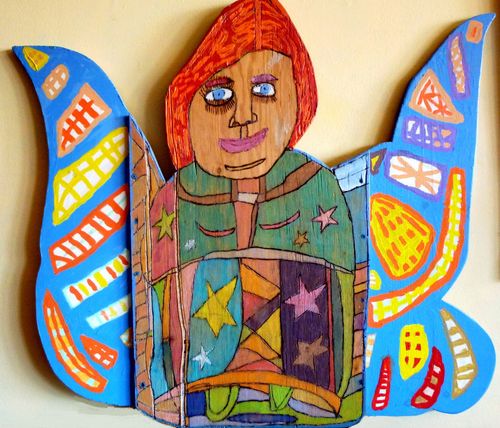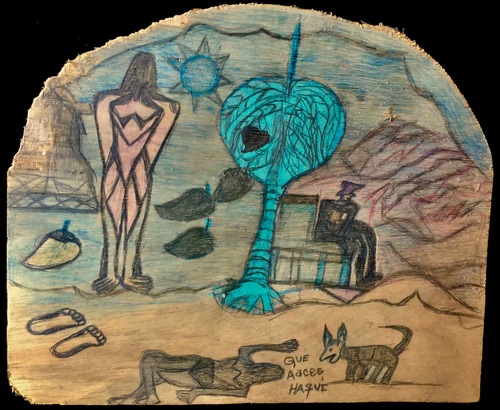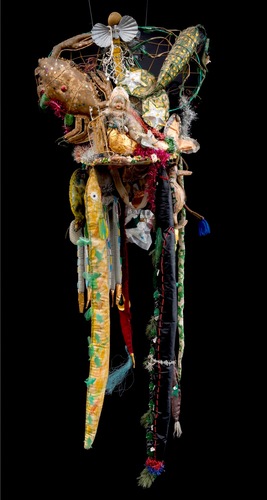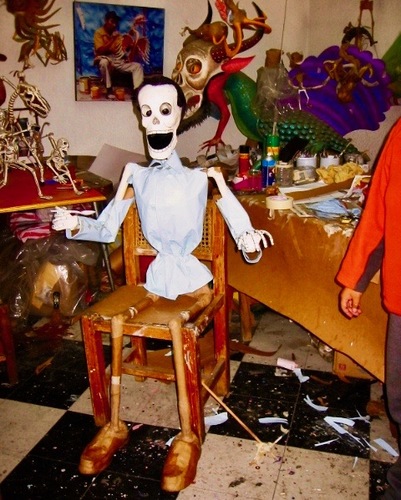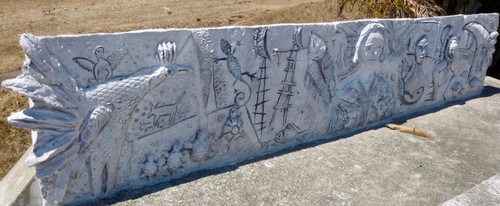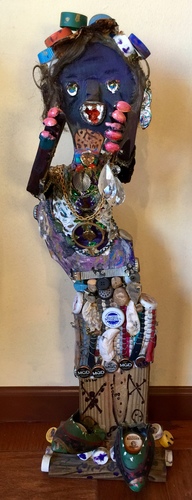Recently we had a chance to visit Hector Pascual Gallo Portieles (“El Gallo”) - a former barber, then diplomat, now visionary artist/obsessive collector - and his “Garden and Gallery of Affections”, the yard in front and the interior of his humble apartment.
We arrived by public bus with no prior appointment. We asked our way to his front door and knocked. El Gallo, now in his nineties and walking with a cane, opened the door, and with a wide smile he let us into his own world. For the next several hours we walked around in awe of the installations we were seeing, and of their maker.
It is not known when during his young adulthood Josvedy started writing and drawing in notebooks, covering every inch of every page with images and dense text controlled by a unique calligraphy and accompanied by symbols and references known only to him. The stories he depicts are made-up fantasies and legends where real historical events are transformed into versions allowing their creator to assume different roles: he becomes a member of European royalty (“Prince of England”) who speaks dozens of languages, a Nobel prize winner, a scientist, an inventor, and so on.
Darcilio Lima had his first art show at 10 years old. He was a crucial player in Rio’s hedonistic underground art scene in the 1960s. He spent a significant period of time in the 1970s in Paris, sleeping in a graveyard. Like any legit surrealist, he was friends with Salvador Dali. And, yet, the Brazilian artist’s name remains widely unknown, despite the captivatingly fine lines and hypnotically twisted figures that ooze forth from the darkest depths of his subconscious. (Huffington Post)
Manuel Mendive Hoyo needs no introduction. We ourselves were long aware of this artist’s extraordinary body of work in the early 1990’s when we visited Havana during the notorious “special period”. He was already an internationally known artist then. Now, decades later, according to Wikipedia, “Manuel Mendive (born 1944) is one of the leading Afro-Cuban artists to emerge from the revolutionary period, and is considered by many to be the most important Cuban artist living today”.
During a recent trip to Havana we decided to visit Mendive’s little town, the sleepy, charming colonial village where he has made his home for most of his life.
Carlos Garcia Huergo’s mysterious drawings combine images of human figures, birds or fantasy creatures with letters, names, numbers and mathematical and religious references. He thus creates a universe populated by inhabitants of his own inner environment which includes angels, devils and - always in the foreground - people, surrounded by text and mathematical symbols.
Estape’s attention to detail is as exquisite as his wit. A pink-eared “Exxon” tiger flexes his muscles, a fire-spitting dragon head nestling on his chest. To his right and left caged birds sing sweetly. A spotted leopard-woman, flesh-pink human breasts bare, smiles enigmatically. A curled snake rises up, cobra-like, its forked tongue a mechanic’s wrench. A dignified lady poses in an ornate, layered outfit, but her white breasts are exposed. A wild-eyed woman, short flowered dress riding up above her crotch, is unaware of the saint at her feet. Men are not much featured in Estape’s work, unless – perhaps – in the disguise of monkeys.
As every other country, Cuba has its share of artists who create their works out of the mainstream, far from the academy, unaware of or oblivious to the “art world”, and without the need of an audience or a marketplace. Often mentally disabled or homeless, they tend to work with humble materials including found objects or discarded packaging. Notable among these Havana based creators is Miguel Ramon Morales Diaz (“Ramon”).
Almost 20 years ago, during one of my visits to Salvador, Bahia, I came across an incredible, don’t know what to call it - carnival costume / wearable altar / art brut installation / outsider art assemblage. A dozen and a half years later I lent the piece to a spectacular exhibition at the American Folk Art Museum in New York City: When the Curtain Never Comes Down: Performance Art and the Alter Ego. The maker of this incredible work is Raimundo Borges Falcão, about whom not much is known. The exhibition produced a fabulous catalog. I wrote a page about Borges Falcão and his incredible work:
Anybody even vaguely familiar with Mexican folk art knows about the Linares family and their paterfamilias, Pedro Linares, who invented a new folk art form in the 1930’s which has been imprinted on Mexican popular arts ever since.
José Garcia (“Pepe”) Montebravo was one of Cuba’s truly great self-taught artists, populating his canvases with his famous “Infanta” women, with Afro-Cuban deities, and with winged creatures both human and animal. In many of his paintings turtles, lizards, roosters, blackbirds, fish, dogs, suns and moons intersect with other-wordly characters in human form. The titles of his works are as mysterious and multi-layered as the pieces themselves: Stew of Fantasies, Confused Situation, Time Trapped, Hazards of Memory….
I met Derek Webster by accident in 2001 when I got lost driving around South Chicago and made a wrong turn. It wasn’t supposed to happen that way.

